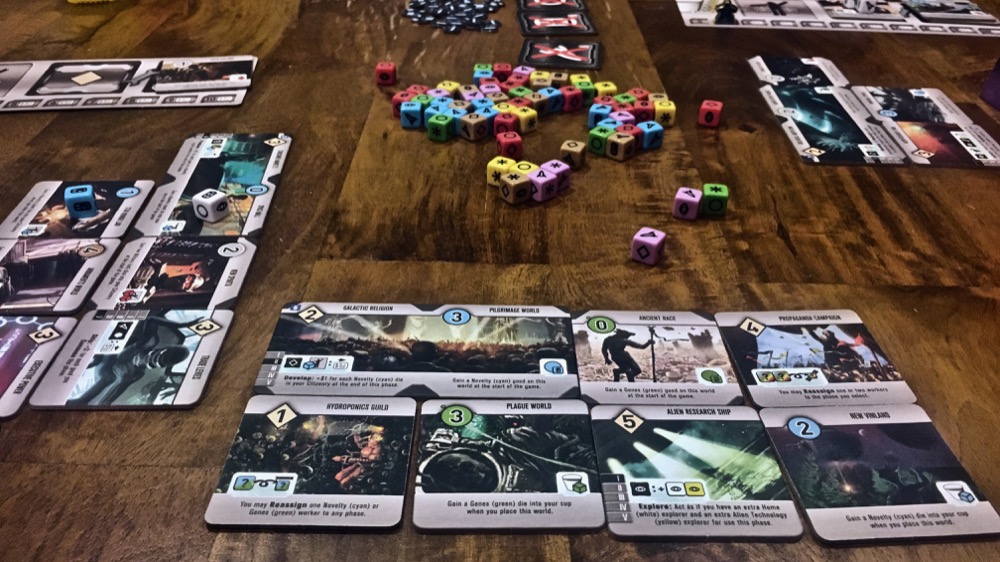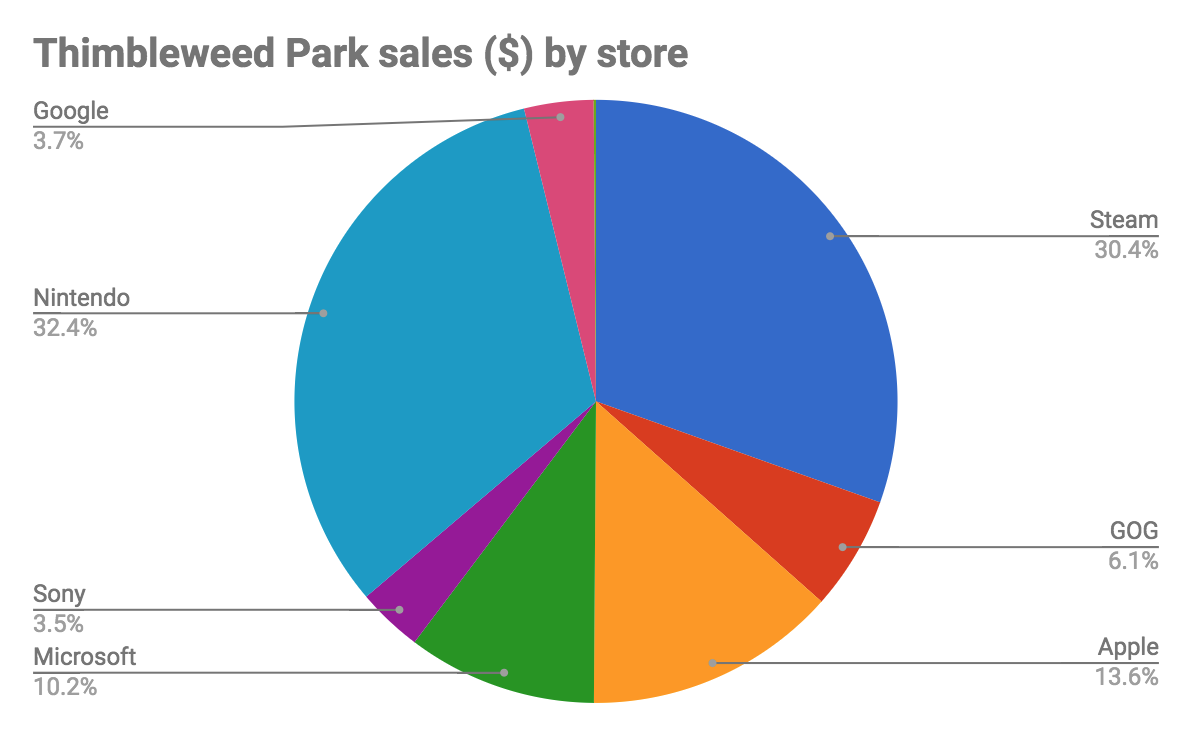“ALL THESE WORLDS ARE YOURS, EXCEPT EUROPA” - Arthur C. Clarke
This always annoyed me. I’m not only glad it annoyed someone else, but glad they decided to make video about it. I feel like I can put years of annoyance to rest now.
While I am slightly disappointed that SCUMM didn’t make the list of Technology, Ranked, I am perplexed how the screw gets #99 while many of the inventions from #98-#1 couldn’t been made without the screw, so it seems like the screw should be higher on the list. Certainly #1 couldn’t have been made without the screw as well as most of the other deadly inventions, so I blame the screw for all evil human inventions. Screw you screw.
- Add new game feature
- Comment out new game feature
- Go to step 1

Interesting tidbit. Last quarter, Thimbleweed Park did 3x as well on Switch than Steam and overall has done better than Steam. It’s hard to tell if we did really well on Switch are just badly on Stream. Probably a little of both. Steam sales were never where I thought they should be.

The Apple number is a little misleading due to the Mac App Store and iOS being lumped together. Also, the GOG number does not include Q3 due to not receiving money from them yet.
Given that it’s a controller based console, I am pretty impressed with the Xbox number. Microsoft has been a great partner.
The Sony numbers are perplexing. Compared to the Xbox, the PS4 has a much larger installed base, especially in Europe where Thimbleweed Park sales have been overwhelmingly the strongest. I am constantly asked why we don’t do a Vita port. This is why.
These are all LTD (Life to Date) numbers, so Steam, GOG and Xbox had a lead, which makes the Switch all the more impressive.
Ten Great Adventure-Game Puzzles
P.S. I’m not linking this just because I’m mentioned three times. Really. I’m not.
It’s missing the pulley in the middle. Archie McPhee’s is only a 5 minute drive from me, so I might head down there and protest. I’ll need signs. Someone call the local TV station.

I think the game I’m looking forward to the most next year is Classic World of Warcraft. I spent a good chunk of my waking life playing WoW when it first came out. I even started a Monkey Island themed guild that sported over hundred members, most of which never got above level 12. But it was good times.
Doing testing on closures. This also makes my head hurt.
What do you think this will print?
local t = {
bar = 100
f = function() {
print(this.bar)
}
}
t2 <- {
bar = 200
}
t2.f <- t.f
local r = {
bar = 1000
function do_call(f) {
f()
}
}
r.do_call(t2.f)
Now with Answers
Well, not answers in the definitive truth of the universe way…
If you compile and run this code in Squirrel, the answer is 1000. This surprised me a little. I was expecting 200, but would have taken 100. As I build this new compiler, being some-what compatible with Squirrel is important, since I have a shit-lot of code already written in Squirrel that needs to run in the new compiler.
My new language (called Dinky, btw) is about 90% syntactically compatible with Squirrel, but subtile functionality like what ’this’ means might be more important since it can fundamentally change the nature of the game’s scripting code I’ve already written.
I don’t think I’ve ever written anything as convoluted as the last function call shown, so it might not be important to adhere to, and instead treat ’this’ more conventionally. I do wish I knew what the philosophy behind Squirrel’s notion of ’this’ is. I’m hesitant to just change it and miss some genius buried in why it works that way it does.
Currently my compiler and interrupter produces the same output as Squirrel and I’ll probably stay with that until I understand the ‘why’ a little better.
I’ve spent three weeks on the new compiler and am now ready to move it over the my new game and start using it. I figure it will take a good part of this week to get the game fully functional under the new compiler and back to where I was with Squirrel.